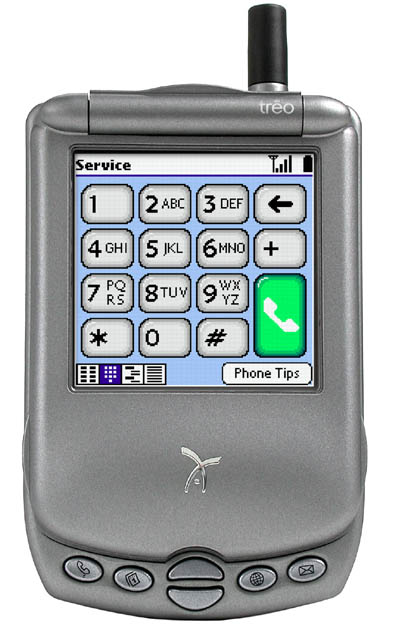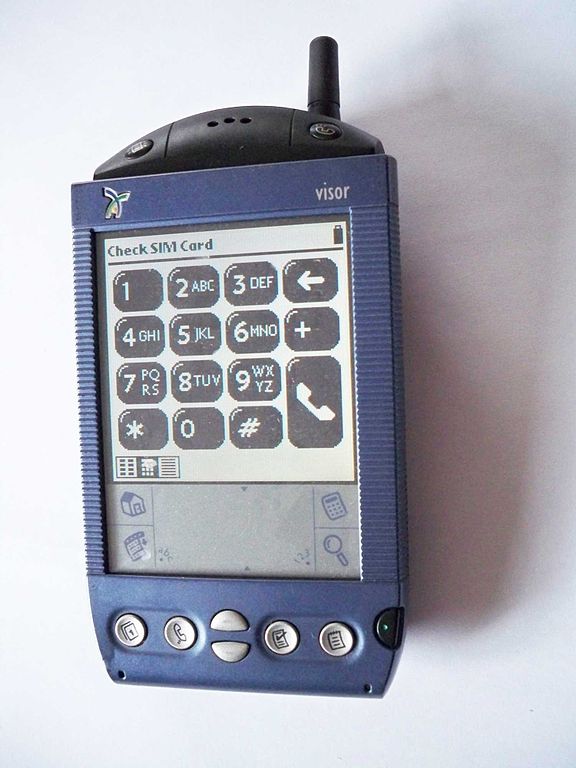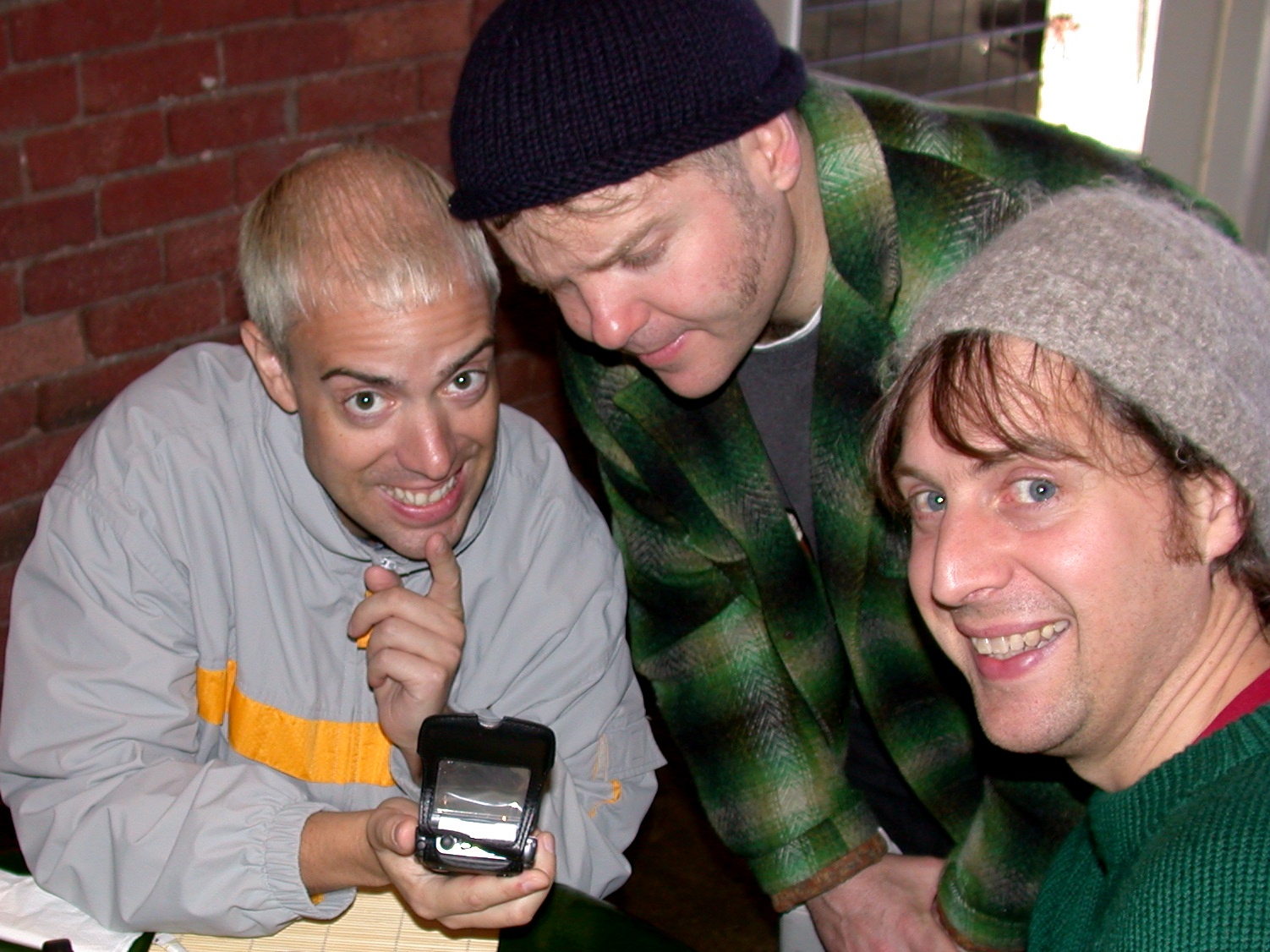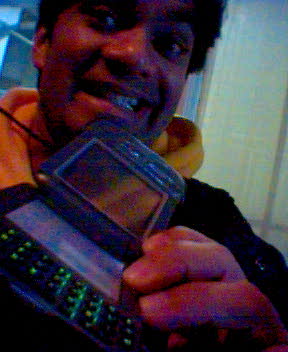I hated my first mobile with a passion because I saw no value in having one. Once I got hooked on the non-voice features, however — text messaging first, data later — it was a different story. At the dawn of the new millennium I had no idea of how powerful the lowly cell phone would one day become; my personal device wish-list had but two items:
- An address book that could be synchronized between phone and computer;
- A phone that could travel with me anywhere in the world.
My first wish was granted in the year 2000 courtesy of a plug-in module for a PDA . The next year I trialled my first “world” phone in Hong Kong, and bought another while I was there. But it wasn’t until 2007 and my first 3G handset that I was able to access Japan’s advanced mobile networks with my own device.
Then there was the third thing, a feature I didn’t even know I wanted until I saw it coming. By the summer of 2009 I could foresee a smartphone future that paralleled the present state of desktop computers and Linux — that the hardware would one day become a commodity, freeing its owner to use the operating system of his or her choice. Not two years later I had CyanogenMod on my first Android phone, and an entire universe of other custom ROMs just a download and install away.
The story of mobile phones doesn’t end here, of course. The hardware continues to evolve, not so much by leaps and bounds anymore as the touch-screen “fondleslab” has become the de facto standard. Internal components are faithfully following Moore’s law, getting ever smaller, better and cheaper. There has been a much more disruptive change in the manufacturers who bring the devices to market; the once-mighty Nokia and RIM have had their market share almost entirely usurped — first by Apple and now, it seems, by Samsung.
On the software side Android is widely acknowledged as the world’s dominant mobile phone OS; that the code is freely available to all ensures a healthy and diverse ecosystem of the aforementioned custom ROMs. But there are new players on the horizon: Firefox is set to release its own mobile OS in the very near future, and some ex-engineers from Nokia have vowed to continue the legacy of the Linux-based Maemo and MeeGo with a new startup called Jolla.
At some point down the road history might allow for a second edition of this book. For now, I can only marvel at the progress I’ve seen. Perhaps the most cherished sign of how far we’ve come is that people in public spaces are generally spending less time shouting into their mobiles and more time quietly interacting with them.
I’ll leave you with a final memory: At South by Southwest in 2011 I attended a movie première at Austin’s historic twelve hundred-seat Paramount Theatre, so packed that I could only get a seat in the last row of the balcony. The film was entirely forgettable, but I’ll always remember what I saw as the end credits began to roll. The huge auditorium in front of me was suddenly lit with the sparkle of a thousand tiny screens, silently reaching out to each other and the world beyond.
For this unabashed mobile phone geek it was a little bit like heaven.
]]>Okay, my GSM-based Treo wasn’t compatible with Japan’s mobile networks, but I could use it pretty much everywhere else. And in 2002-2003 it seemed like I did just that.
By this time I had racked up enough Air Canada points for a free trip to Australia, via Hawaii. I remember being on a bus in Honolulu and firing up the mobile version of MapQuest to verify the location of the Ala Moana Center, where I would enjoy my first-ever serving of Hawaiian poi. Choosing a food court vendor over a touristy hotel restaurant saved me about fifty bucks. Later that trip I would surprise a friend back in Canada with my reply to her innocuous text: “What am I up to? Oh, not much… just having breakfast in Sydney, Australia is all…”
Later that year I was back in Singapore with the The Second City theatre, and amazed our stage manager by pulling up almost-live hockey scores from back home on Yahoo’s mobile sports site. On that same trip I somehow managed to find a cute Singaporean pen pal to flirt with via SMS when I got back home — once we both figured out the country codes, of course. It didn’t last long but while it did it was an amazing thing, sharing random moments from lives on the run from opposite sides of the world. This was all in the days before Twitter, of course.
My Treo was also there for me during tougher times. It allowed me to take diligent notes from doctors as my father lay dying in hospital. During the SARS epidemic, no less. And when a sudden, North America-wide power outage silenced my desktop computer and cordless phones, my Treo persevered. That I could still make calls on it made me quite popular with my neighbours, at least for the duration of the blackout.
The last time my Treo would travel with me was, fittingly, on my last jaunt as an overseas comedian, performing for Canadian troops stationed in Bosnia-Herzegovina. We were already halfway through our two-week USO-style tour — sorry, deployment — when I learned that mobile phones were not allowed on base. Apparently local crime rings had the technology to intercept mobile transmissions, including SMS. But about the only sensitive information I remember sending was that the food was fantastic. Seriously, an army really does travel on its stomach.
My Treo and I had some great times together and it rarely, if ever, let me down. I miss it to this very day.
]]>
I must admit that gazing upon Handspring’s first colour Treo has me trembling just a little bit… My first smart/world phone was so clearly ahead of its time (in 2002) — in fact, the only other handset that caught my eye that entire year was Nokia’s 7650, which cost twice as much and didn’t work in North America!
And here’s the review that convinced me to buy it.
2002 would prove to be a very good year for travel, and my Treo proved to be an excellent travel companion. Here’s us on Capital Hill, me checking my imaginary wristwatch for a non-existent appointment. G-Men wear polka dots, don’t they?
Here’s us in Melbourne, Australia with comedy duo Scared Weird Little Guys, and a mutual friend back in Canada on speakerphone.
And here’s Ray Deonandan, whom I took pity on when the hinge of his Treo broke. After I sold him mine he broke the hinge on that a month or so later. I’ll never forgive myself for not keeping it…
Relax, the video embedded above isn’t actually ninety-one minutes, more like three and a half. I had forgotten that the 270 didn’t support GPRS when it shipped, making the Treo the lucky recipient of my first-ever firmware upgrade!
]]>I had already been using personal digital assistants (PDAs) for about two years. I got started with an Apple Newton; some hospital or pharmaceutical company had returned a bunch of them to a local electronics shop, who in turn passed the savings on to me. It wasn’t nearly as bad as people were making it out to be — remember that “eat up Martha” gag on The Simpsons? — but the Palm Pilot that succeeded it was orders of magnitude better.
Walking around with my entire calendar and address book in my pocket was incredibly convenient, and the idea was catching on. As I was starting to make a name for myself as an actor a local radio station invited me to debate PDAs vs. paper-based organizers on-air. My opponent clearly didn’t stand a chance; nonetheless, I went easy on her right up until the very end, when the moderator challenged us to produce contact details for our respective dentists. The poor woman had barely cracked open her not-so-little black book as I was already blurting out the name, address and phone number of my dental office — much to the delight of the folks who worked there.
Here’s the thing, though: beyond the quick access my electronic address book wasn’t actually that useful. Sure, it synchronized with my desktop computer, but the desktop version was a lot more useful. To compose an email to someone all I had to do was click on their name. I could even dial their phone number thanks to the modem attached to my computer. Why couldn’t my PDA do this?
Thankfully, some clever people were considering this problem even before I was. One of them was Jeff Hawkins, co-CEO of Handspring, Inc. He was the inventor of the original Palm Pilot for U.S. Robotics, and when USR was bought up by 3Com he moved on to start his own company. Where 3Com targeted the business market Handspring went straight for geeks like me. The distinguishing feature of Handspring devices was an expansion slot at the back called a SpringBoard, giving you the ability to add and remove specific modules — games, dictionaries, memory expansion, the spool of dental floss I got at the Handspring booth at Comdex 2001… But the VisorPhone trumped them all, turning my Handspring PDA into a PDA phone.
It wasn’t the only PDA phone on the market, nor was it the only Palm OS-based PDA phone at the time; Bell Mobility sold a Qualcomm device called the pdQ — but it cost a thousand bucks and was ugly as sin. The $99 VisorPhone wasn’t technically available to Canada, but as it wasn’t locked to any carrier and my brother lived in the United States at the time he was able to bring one home for me at Christmas in 1999. And what a Christmas present it was! No more fiddling around with infrared connections; now I could text directly from my Visor. I could dial numbers from it, too. And the conversation I remember most?
“Are you on your VisorPhone? It sounds like crap…”
]]>
Meet my first PDA phone… the Handspring VisorPhone! Pen Computing’s review of it from January 2001 is still online; you can read it here. Keep an eye out for the profile shot of the VisorPhone resting on an outside table — that’ll give you an idea of how ungainly it was.
Just so we’re all on the same page here, Handspring was the breakaway licensee of Palm OS devices headed by inventor Jeff Hawkins. The distinguishing feature of the company’s first-generation products was the SpringBoard expansion slot. So while the VisorPhone was technically an accessory you needed a HandSpring device to run it. And near as I remember that device more or less had to be the Prism Color, due to it’s faster processor, colour screen and rechargeable batteries.
]]>

